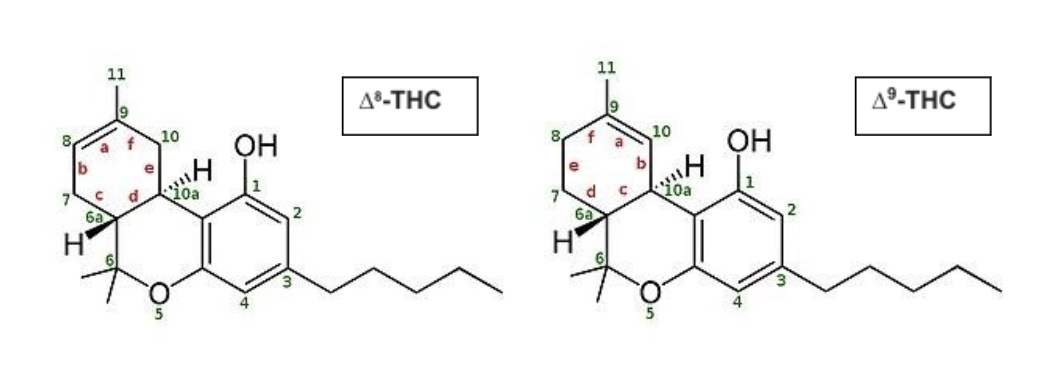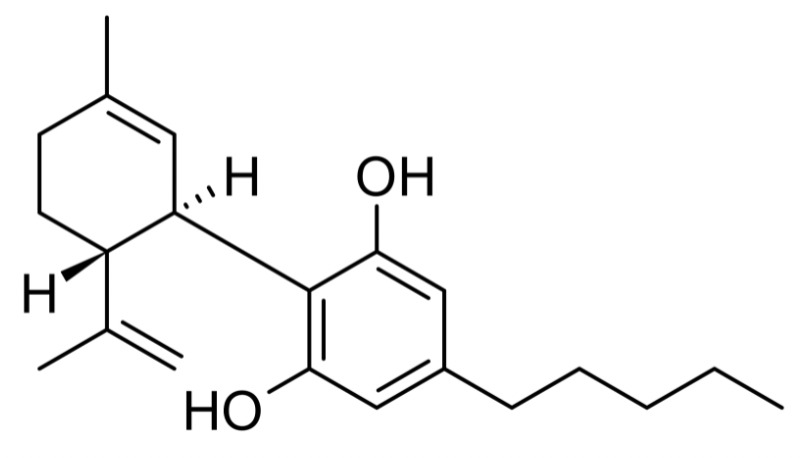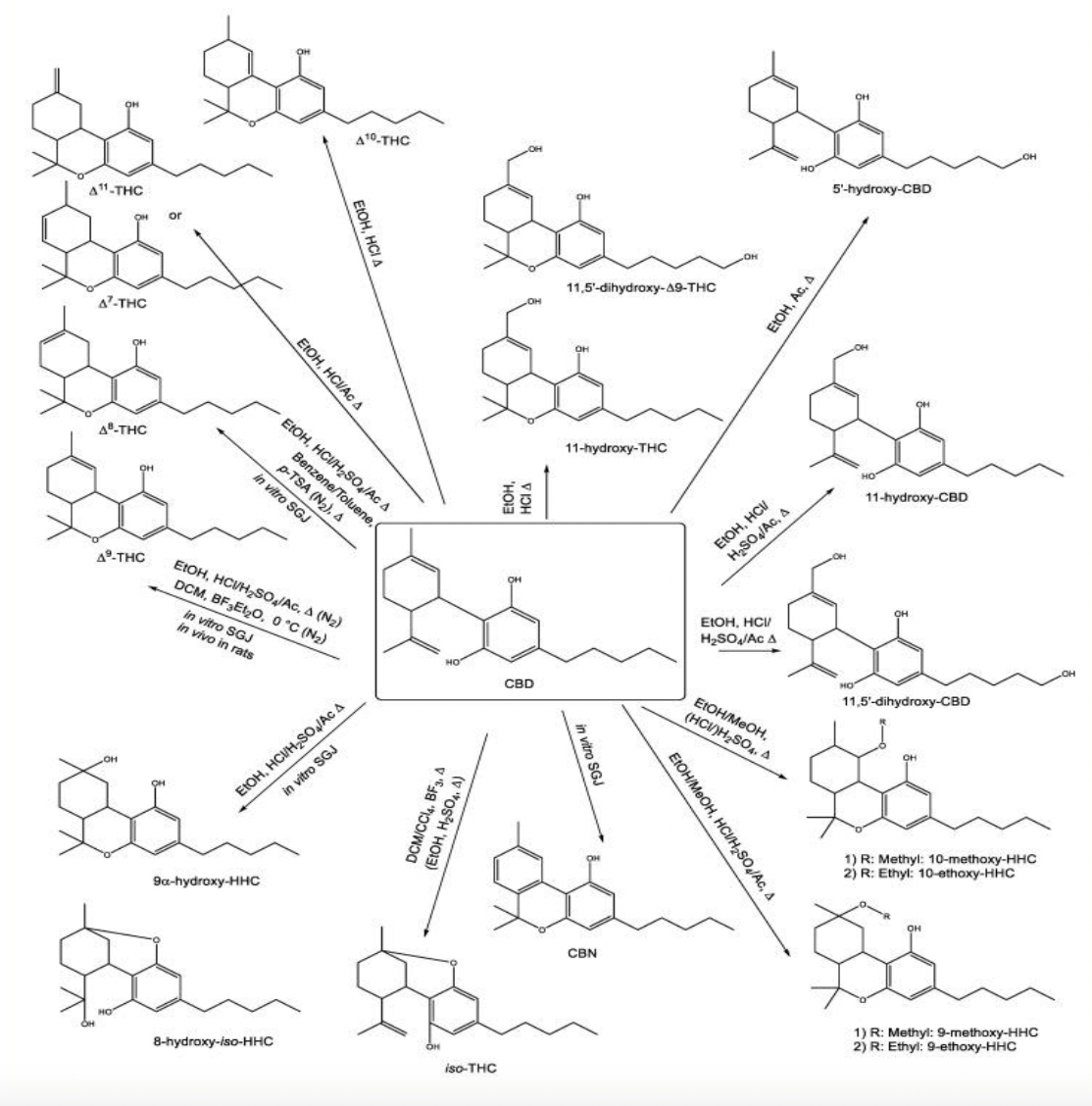GCS CEO, Christopher Tasker, BSc, MRes, explores how the oversupply of hemp biomass has led to producers finding new ways of monetising products. He discusses the emergence of delta-8-THC and the need for professional supervision of this kind of chemistry.
In the ever-evolving battle for profitability in the cannabis industry, everything and anything is being explored to differentiate from the competition and appease investors. CBD aka “cannabidiol” has been a buzzword for some time now in health and wellness circles.
The initial green rush seen in CBD production has seen a lull in the last two years. After the global loosening of CBD regulations, crop production skyrocketed. After hearing the successes of their CBD-producing colleagues, massive investments were made into upscaling CBD production globally. This global push to cash in on the green rush has caused an over-supply of hemp biomass.
The global oversupply has meant a depression in the prices of CBD biomass. This depression in prices and oversupply of biomass has meant that producers have had to explore alternative means of monetizing their products. The efficiency of hemp production as a source of CBD is debatable. Hemp is indeed a fine crop but with average yields of CBD between 1 to 8 per cent, a huge amount of refining is required to extract the precious cannabinoids. As is common with many hemp farms cultivating for CBD, the numerous other beneficial saleable products of the hemp crop have been overlooked.
Delta variants of THC
The delta-8 -tetrahydrocannabinol (delta-8-THC) trend has emerged as a solution to this oversupply of CBD biomass. An interesting chemical property of CBD meant that chemists could convert the unwanted CBD into isomers of THC.
What is an isomer I hear you say? Isomers are two or more compounds with the same formula but a different arrangement of atoms in the molecule and different properties. THC or Tetrahydrocannabinol is a compound that most in our industry will be familiar with. The molecular formula of THC is C₂₁H₃₀O₂. For the non-chemistry speakers, this means the THC molecule consists of 21 carbon atoms, 30 hydrogen atoms, and 2 atoms of oxygen. The subtle difference between the two forms of THC boils down to as little as the positioning of a double bond. Some of you may have noticed that this is also the chemical formula for CBD.

Figure 1. The chemical structures of ∆8-THC and ∆9-THC. ∆8-THC has a double bond between the carbon atoms labeled 8 and 9. ∆9-THC has a double bond between the carbon atoms labeled 9 and 10.
The delta-8-tetrahydrocannabinol that we are discussing today, is an isomer of THC. This base chemistry means that delta-8-THC can be synthesized from CBD which also shares this same C₂₁H₃₀O₂ structure (US EPA National Center for Environmental Assessment, 2009).

Figure 2. The chemical structure of cannabidiol (CBD)
With tonnes of waste CBD biomass flooding the market, creative chemists have been left with a high volume of CBD to play with and supported by some very relieved hemp producers. The emergence of the delta-8-THC trend has been triggered by some clever chemistry that advocates argue is a legal method of exploiting a loophole in the 2018 United States Farm Bill.
Both forms of THC share a very similar pharmacological profile and the marketability of the delta-8 form has been that it is less potent than delta-9-THC. This is true, delta-8-THC exhibits a lower psychotropic potency to delta-9-THC, a ratio of roughly 2:3 (Hollister and Gillespie, 1973). In the interests of brevity, this article will not delve deeply into the effects of delta-8-THC, but in short, the physiological effects are very similar to that of delta-9-THC. Of note is that research into most of these minor cannabinoids is yet to fully gain pace, so in actuality we know very little about these molecules and the true extent of their effects in the body. In the real world, most of these products that are claimed to contain delta-8-THC remain extremely difficult to verify.
Read more: Five ways science can help your cannabis business
A key drawback to this trendy new product is that there is likely more inside the product than just the delta-8-THC. Depending on the process used, any number of additional products may be formed and left residually in the product. In combination with lagging regulatory oversight in this market, it is very difficult to verify the legitimacy of these products. Although there is a legitimate chemical basis for these conversions and the utilisation of waste CBD, we are falling foul of several of the same issues we have previously seen in over-the-counter (OTC) CBD products. This new trend is almost a scaling up of many of the issues we witnessed when CBD first emerged into the legal space. Verifying these products is extremely difficult not just for consumers but also for analysts.

Figure 3. The many chemical conversion possibilities for CBD and their respective formation conditions (Golombek et al., 2020).
Like many processes in the field of cannabinoid chemistry, there are a host of other factors and products to consider. Something that we have discussed before at GCS is the presence of residual solvents in cannabis products. The same concerns ring true for the formation of delta-8-THC from CBD. Strong acids and solvents are required that if not appropriately neutralized can find themselves being consumed by unsuspecting members of the public. Be under no illusion, delta-8-THC is a molecule of great therapeutic potential, but this is by no means transferrable to the products that are being sold OTC to consumers.
It is fair to say that products that are being manufactured en masse using loopholes to maintain profitability are not the most reliable of sources. The driver here is profit, and with all the best intentions in the world, analysing and regulating this grey area of the market is invariably difficult. It has been a fantastic way to reutilise what would potentially be a waste product. However, chemistry of this kind needs to be professionally supervised.
The process for converting CBD into delta-8-THC can become extremely murky and there are numerous methods of balancing and refining the process. Everything from the purity of CBD through to the ratio of acid used in the conversion process. As with many chemical processes, if not appropriately controlled there are potentially explosive outcomes from uninformed production. In the eyes of many, delta-8-THC is a synthetic product made using CBD isolated from hemp. The claim that it is legal is a point of legal contention.
This issue highlights once again the disconnect between the academic perspective and the perspective of industry actors. The competitiveness of cannabis means that more and more companies are looking for loopholes to exploit or as some might describe it, finding a niche. What is clear though is that our industry is running out of ideas. Companies repeatedly look towards the plant for new trends and opportunities. People hold the greatest potential in the cannabis industry. To promote innovation and differentiation we have created a range of educational tools that empower companies to make informed and independent business decisions.
Christopher Tasker
CEO
Global Cannabinoid Solutions
GCS have a Global network of cannabis academics to solve Industry problems. Existing knowledge is shared and developed to create unique and innovative education tools. You can explore its range of educational products and see how you can strengthen our industry, your business and society.
References
Golombek, P. et al. (2020) ‘Conversion of Cannabidiol (CBD) into Psychotropic Cannabinoids Including Tetrahydrocannabinol (THC): A Controversy in the Scientific Literature’, Toxics. Multidisciplinary Digital Publishing Institute (MDPI), 8(2). doi: 10.3390/TOXICS8020041.
Hollister, L. E. and Gillespie, H. K. (1973) ‘Delta-8- and delta-9-tetrahydrocannabinol; Comparison in man by oral and intravenous administration’, Clinical Pharmacology & Therapeutics, 14(3), pp. 353–357. doi: 10.1002/cpt1973143353.
US EPA National Center for Environmental Assessment (2009) The Merck index: An encyclopedia of chemicals, drugs, and biologicals: Benzo[a]pyrene. Edited by M. O’Neil, MJ; Smith, A; Heckelman, PE; Obenchain, JR; Gallipeau, JR; D’Arecca. US EPA National Center for Environmental.
[activecampaign form=31]























